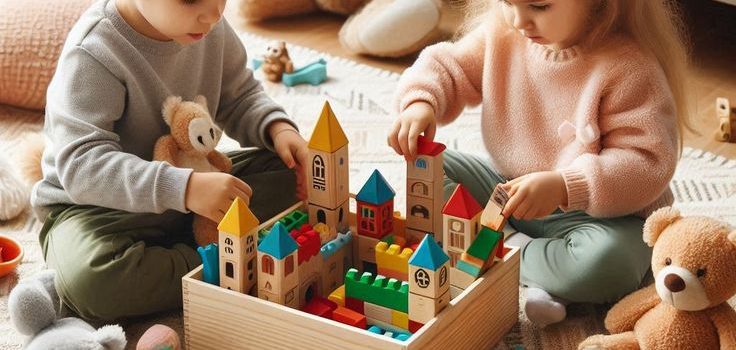
How to Pick Safe and Fun Toys for Every Age Group
Understanding the Vital Connection Between Safety and Play
The safety of children’s toys is a non-negotiable priority for parents and caregivers. From the earliest stages of infancy to the dynamic years of adolescence, playthings must meet stringent safety benchmarks while still offering developmental benefits. Properly chosen toys not only foster physical and mental growth but also provide joy and entertainment, contributing to a well-rounded childhood experience. Materials should be free of harmful substances, components securely attached, and designs tailored to a child’s motor and cognitive abilities. A toy that stimulates learning and imagination but also guards against potential hazards achieves the perfect balance.Infants and Sensory Play: Gentle and Stimulating
In the earliest months of life, babies explore the world through their senses. Toys that offer contrasting colors, varied textures, soft sounds, and gentle motion support brain development and sensory awareness. Rattles, cloth books, teething rings, and plush toys serve as foundational tools for growth. At this age, safety entails avoiding small parts, toxic finishes, and hard or breakable materials. Items should be easy to clean and robust enough to withstand chewing, throwing, or squeezing. Seamless construction and soft edges minimize risks as infants refine hand-eye coordination and tactile understanding.Toddlers on the Move: Supporting Exploration Safely
As children transition from crawling to walking, their toys must evolve to match newfound mobility and curiosity. Push-and-pull toys, stacking blocks, musical instruments, and shape sorters not only delight toddlers but also encourage motor development and cause-effect learning. With increased mobility comes a greater need for safety vigilance—non-slip bases, secure wheels, and rounded edges become crucial. Pieces should be large enough to avoid choking risks, and all materials must be non-toxic. At this age, simplicity paired with engaging interaction yields the best results in both safety and enjoyment.Preschoolers and Pretend Play: Creativity Meets Caution
Between the ages of three and five, children begin to create elaborate scenarios and explore the world through pretend play. Dress-up kits, play kitchens, puppets, and dolls let them role-play and practice social skills. While imagination flourishes, safety remains key—small accessories must be carefully assessed, and all toys should be durable and washable. Supervision is still essential to ensure items are used as intended. Toys that double as learning aids—like puzzles or basic science kits—should have easy-to-handle parts and instructions suited for early learners. Clear labeling and reputable brands help ensure quality.School-Aged Children and Independent Play: Safety in Complexity
As kids grow more independent, they gravitate toward toys that challenge their intellect and abilities. Board games, construction kits, electronic gadgets, and outdoor sports gear become favorites. At this stage, safety involves a new level of oversight: batteries must be secured, moving parts must be tested for durability, and protective gear should accompany physically demanding activities. While older children can follow more complex instructions, items should still be inspected for defects and wear. Encouraging critical thinking, creativity, and physical activity within safe limits supports holistic development.Tweens and Teens: Age-Appropriate Responsibility and Engagement
Older children seek meaningful, peer-influenced entertainment. Whether it’s robotics kits, strategy games, musical instruments, or DIY art sets, the challenge is to maintain safety while respecting growing autonomy. Toys must balance stimulation with secure use. With access to the internet and electronics, digital safety becomes paramount—content filtering, parental controls, and time management settings are crucial. Tools that promote skill-building and healthy hobbies, from coding platforms to mechanical building sets, are ideal. Guidance should accompany usage to ensure tools are being used respectfully and safely.Materials Matter: Understanding Safe Composition
Parents often overlook the importance of the materials used in toys. Natural wood, food-grade silicone, BPA-free plastics, and organic fabrics are superior choices for reducing exposure to harmful chemicals. Painted toys should use non-toxic, lead-free finishes. Recyclable and biodegradable materials not only promote health but also encourage environmental consciousness from a young age. Ensuring proper labeling and certification from organizations such as ASTM, EN71, or CPSC verifies compliance with safety standards. Always read the fine print to know exactly what your child is interacting with.Smart Shopping: Reading Labels and Doing Research
The toy aisle is vast, and flashy packaging can be deceiving. Learning to read age recommendations, material disclosures, and manufacturer labels can save time and worry. Online reviews, consumer safety alerts, and parental feedback offer invaluable insights into product reliability. Websites like HealthyToys.org or the CPSC’s recall database can keep families informed. It’s also beneficial to favor brands known for rigorous safety testing and transparent sourcing practices. Shopping with safety in mind leads to more informed, confident purchases.The Role of Supervision and Safe Play Environments
No toy, no matter how safe, can replace the importance of adult supervision. Creating a safe environment for play includes keeping areas clean, organizing toys by age and use, and regularly checking for broken or outdated items. Toys meant for older siblings should be kept out of reach from younger ones. Educating children on the safe use of their toys builds responsibility and awareness. Safety isn’t just about the product—it’s also about how, where, and with whom it’s used.Balancing Entertainment, Education, and Safety
Fun and safety should go hand-in-hand. A toy that sparks joy while promoting learning and staying within safety parameters is ideal. Multi-functional toys that combine entertainment with skill-building—such as memory games, building sets, or interactive storybooks—offer holistic benefits. Parents should seek products that evolve with the child, supporting different stages without sacrificing enjoyment. By considering a toy’s educational value, entertainment potential, and safety profile, caregivers can foster meaningful, secure play experiences.Conclusion: Building a Safe, Stimulating World Through Thoughtful Toy Choices
Selecting age-appropriate, engaging, and safe toys is an essential part of nurturing childhood development. Each stage presents new needs, challenges, and opportunities for growth. By staying informed, prioritizing quality, and embracing variety, parents and caregivers can empower children to explore, learn, and thrive through play. When safety meets joy, the result is a childhood filled with discovery, confidence, and boundless imagination.admin
